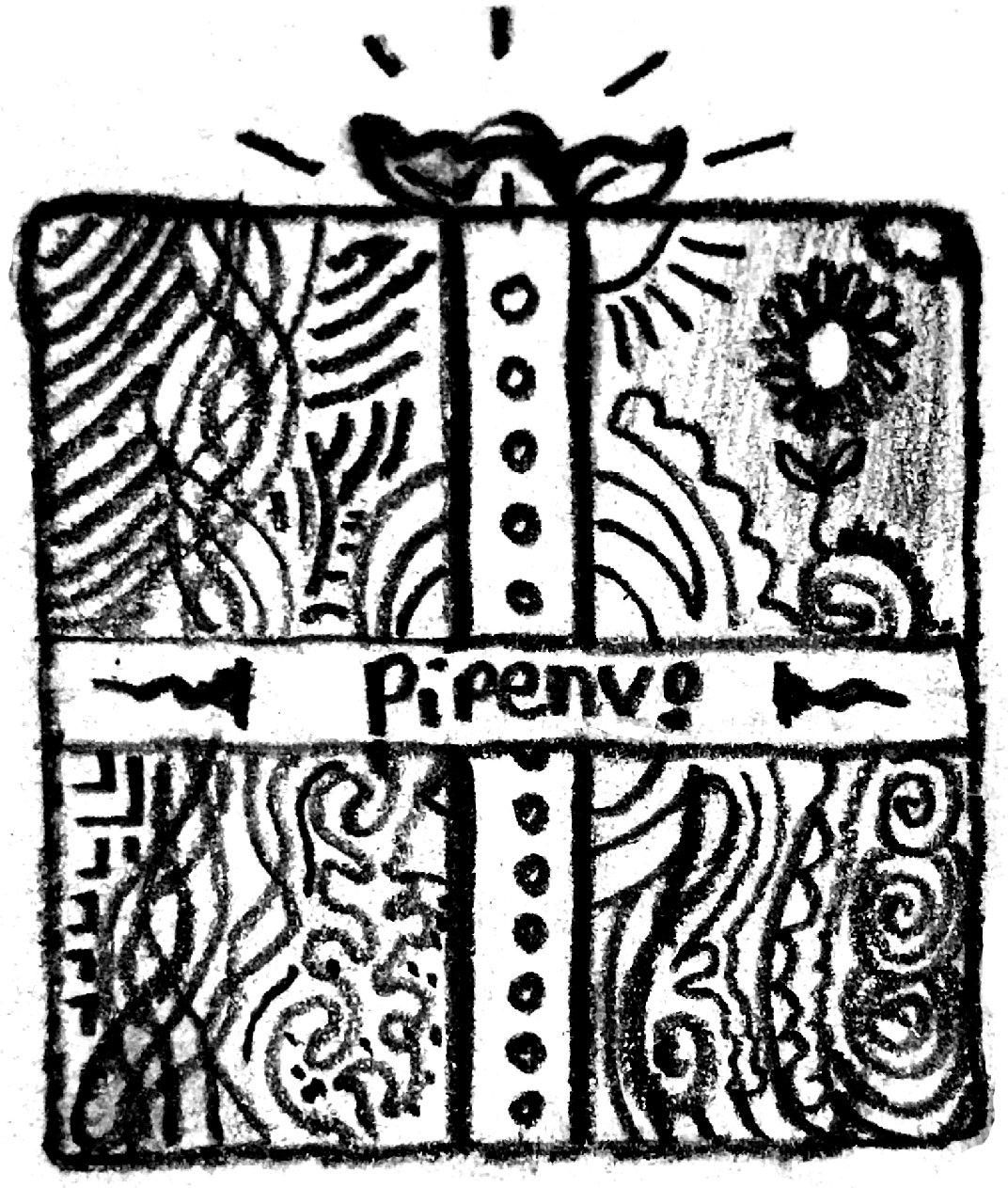Pipenv: Python Dev Workflow for Humans¶
Pipenv is a Python virtualenv management tool that supports a multitude of systems and nicely bridges the gaps between pip, python (using system python, pyenv or asdf) and virtualenv. Linux, macOS, and Windows are all first-class citizens in pipenv.
Pipenv automatically creates and manages a virtualenv for your projects, as well as adds/removes packages from your Pipfile as you install/uninstall packages. It also generates a project Pipfile.lock, which is used to produce deterministic builds.
Pipenv is primarily meant to provide users and developers of applications with an easy method to arrive at a consistent working project environment.
The problems that Pipenv seeks to solve are multi-faceted:
You no longer need to use
pipandvirtualenvseparately: they work together.Managing a
requirements.txtfile with package hashes can be problematic. Pipenv usesPipfileandPipfile.lockto separate abstract dependency declarations from the last tested combination.Hashes are documented in the lock file which are verified during install. Security considerations are put first.
Strongly encourage the use of the latest versions of dependencies to minimize security risks arising from outdated components.
Gives you insight into your dependency graph (e.g.
$ pipenv graph).Streamline development workflow by supporting local customizations with
.envfiles.
Install Pipenv Today!¶
The recommended way to install pipenv on most platforms is to install from pypi using pip:
$ pip install --user pipenv
More detailed installation instructions can be found in the installing Pipenv chapter.
✨🍰✨
Pipenv Features¶
Enables truly deterministic builds, while easily specifying only what you want.
Generates and checks file hashes for locked dependencies when installing from
Pipfile.lock.Automatically install required Python version when
pyenvis available.Automatically finds your project home, recursively, by looking for a
Pipfile.Automatically generates a
Pipfile, if one doesn’t exist.Automatically creates a virtualenv in a standard customizable location.
Automatically adds/removes packages to a
Pipfilewhen they are installed or uninstalled.Automatically loads
.envfiles to support customization and overrides.
Pipenv Documentation¶
Pipenv Documentation
- Pipenv Installation
- Pipfile & Pipfile.lock
- Pipenv CLI Reference
- Pipenv Commands
- Configuration
- virtualenv
- Pipenv Workflows
- Specifiers
- Specifying Package Indexes
- Credentials
- Environment and Shell Configuration
- Docker Containers
- Custom Script Shortcuts
- Other topics
- ☤ Supplying additional arguments to pip
- ☤ Using pipenv for Deployments
- ☤ Pipenv and Other Python Distributions
- ☤ Generating a
requirements.txt - ☤ Detection of Security Vulnerabilities
- ☤ Community Integrations
- ☤ Open a Module in Your Editor
- ☤ Automatic Python Installation
- ☤ Testing Projects
- ☤ Working with Platform-Provided Python Components
- Frequently Encountered PiPenv Problems
- ☤ Your dependencies could not be resolved
- ☤ No module named
- ☤ My pyenv-installed Python is not found
- ☤ Pipenv does not respect pyenv’s global and local Python versions
- ☤ ValueError: unknown locale: UTF-8
- ☤ /bin/pip: No such file or directory
- ☤ Pipenv does not respect dependencies in setup.py
- ☤ Using
pipenv runin Supervisor program - ☤ An exception is raised during
Locking dependencies...
- 2023.9.1 (2023-09-01)
- Pipenv 2023.9.1 (2023-09-01)
- 2023.8.28 (2023-08-28)
- 2023.8.26 (2023-08-26)
- 2023.8.25 (2023-08-25)
- 2023.8.23 (2023-08-22)
- 2023.8.22 (2023-08-22)
- 2023.8.21 (2023-08-21)
- 2023.8.20 (2023-08-20)
- 2023.8.19 (2023-08-19)
- 2023.7.23 (2023-07-23)
- 2023.7.9 (2023-07-09)
- 2023.7.4 (2023-07-04)
- 2023.7.3 (2023-07-02)
- 2023.7.1 (2023-07-01)
- 2023.6.26 (2023-06-26)
- 2023.6.18 (2023-06-18)
- 2023.6.12 (2023-06-11)
- 2023.6.11 (2023-06-11)
- 2023.6.2 (2023-06-02)
- 2023.5.19 (2023-05-19)
- 2023.4.29 (2023-04-29)
- 2023.4.20 (2023-04-20)
- 2023.3.20 (2023-03-19)
- 2023.3.18 (2023-03-19)
- 2023.3.18 (2023-03-18)
- 2023.2.18 (2023-02-18)
- 2023.2.4 (2023-02-04)
- 2022.12.19 (2022-12-19)
- 2022.12.17 (2022-12-17)
- 2022.11.30 (2022-11-30)
- 2022.11.25 (2022-11-24)
- 2022.11.24 (2022-11-24)
- 2022.11.23 (2022-11-23)
- 2022.11.11 (2022-11-11)
- 2022.11.5 (2022-11-05)
- 2022.11.4 (2022-11-04)
- 2022.10.25 (2022-10-25)
- 2022.10.12 (2022-10-12)
- 2022.10.11 (2022-10-11)
- 2022.10.10 (2022-10-10)
- 2022.10.9 (2022-10-09)
- 2022.10.4 (2022-10-04)
- 2022.9.24 (2022-09-24)
- 2022.9.21 (2022-09-21)
- 2022.9.20 (2022-09-20)
- 2022.9.8 (2022-09-08)
- 2022.9.4 (2022-09-04)
- 2022.9.2 (2022-09-02)
- 2022.8.31 (2022-08-31)
- 2022.8.30 (2022-08-30)
- 2022.8.24 (2022-08-24)
- 2022.8.19 (2022-08-19)
- 2022.8.17 (2022-08-17)
- 2022.8.15 (2022-08-15)
- 2022.8.14 (2022-08-14)
- 2022.8.13 (2022-08-13)
- 2022.8.5 (2022-08-05)
- 2022.7.24 (2022-07-24)
- 2022.7.4 (2022-07-04)
- 2022.5.3.dev0 (2022-06-07)
- 2022.5.2 (2022-05-02)
- 2022.4.30 (2022-04-30)
- 2022.4.21 (2022-04-21)
- 2022.4.20 (2022-04-20)
- 2022.4.8 (2022-04-08)
- 2022.3.28 (2022-03-27)
- 2022.3.24 (2022-03-23)
- 2022.3.23 (2022-03-22)
- 2022.1.8 (2022-01-08)
- 2021.11.23 (2021-11-23)
- 2021.11.15 (2021-11-15)
- 2021.11.9 (2021-11-09)
- 2021.11.5.post0 (2021-11-05)
- 2021.11.5 (2021-11-05)
- 2021.5.29 (2021-05-29)
- 2020.11.15 (2020-11-15)
- 2020.11.4 (2020-11-04)
- 2020.8.13 (2020-08-13)
- 2020.6.2 (2020-06-02)
- 2020.5.28 (2020-05-28)
- 2018.11.26 (2018-11-26)
- 2018.11.14 (2018-11-14)
- 2018.10.13 (2018-10-13)
- 2018.10.9 (2018-10-09)
- 2018.7.1 (2018-07-01)
- 2018.6.25 (2018-06-25)



